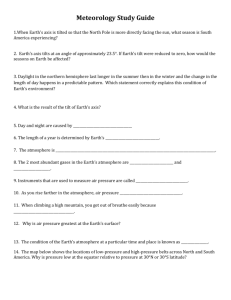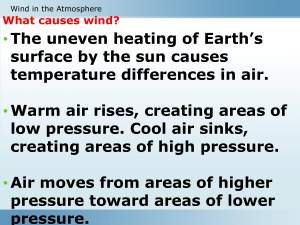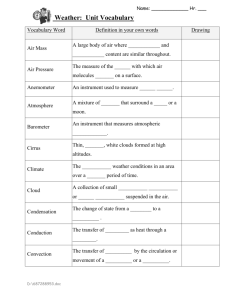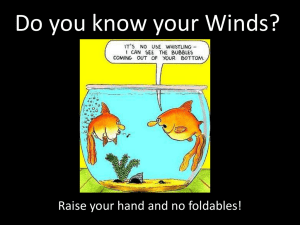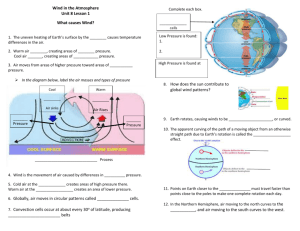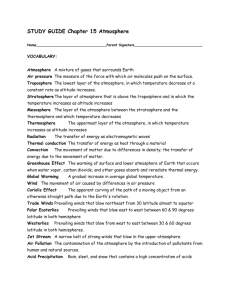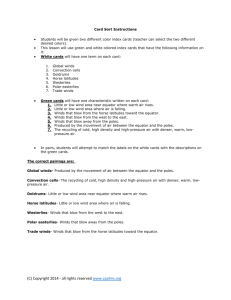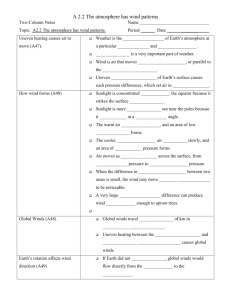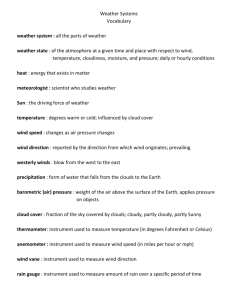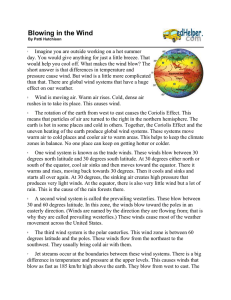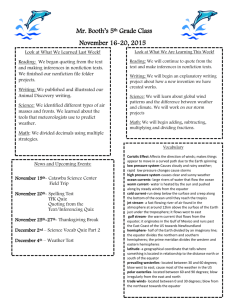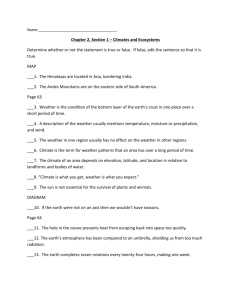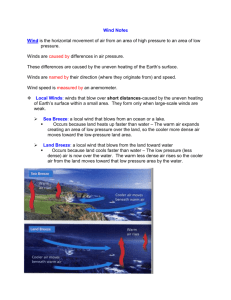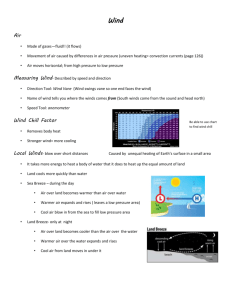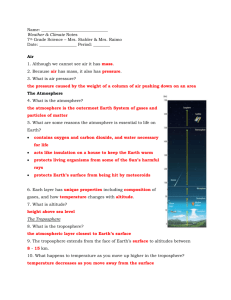Unit 4 Lesson 3 Wind in the Atmosphere
advertisement
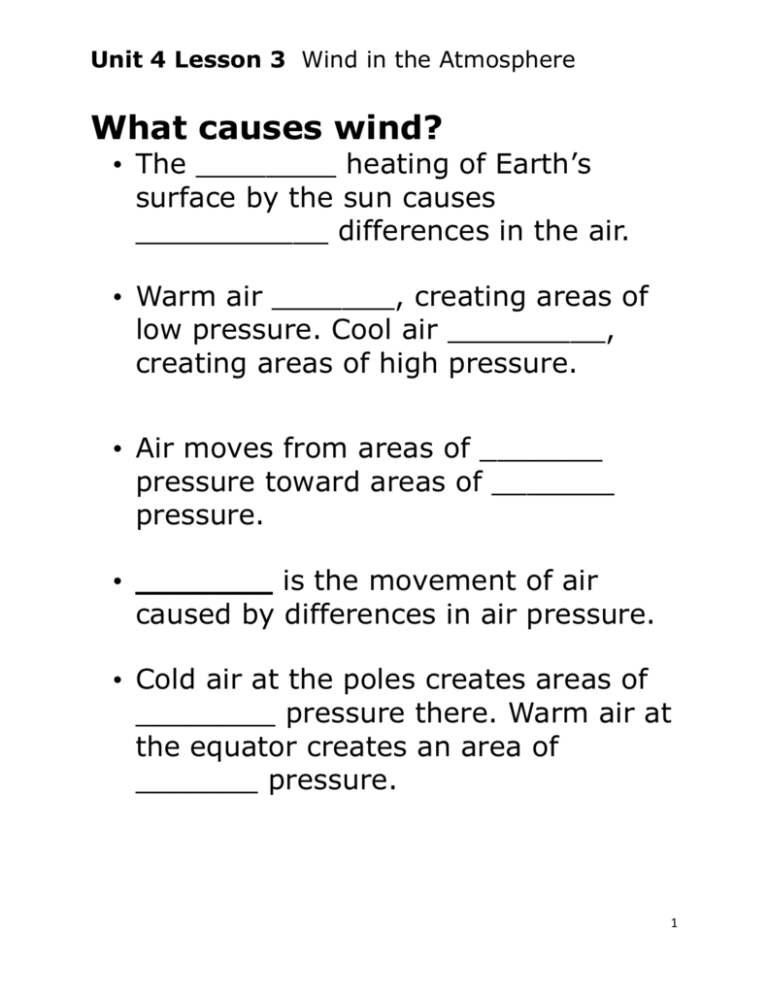
Unit 4 Lesson 3 Wind in the Atmosphere What causes wind? • The ________ heating of Earth’s surface by the sun causes ___________ differences in the air. • Warm air _______, creating areas of low pressure. Cool air _________, creating areas of high pressure. • Air moves from areas of _______ pressure toward areas of _______ pressure. • _______ is the movement of air caused by differences in air pressure. • Cold air at the poles creates areas of ________ pressure there. Warm air at the equator creates an area of _______ pressure. 1 Unit 4 Lesson 3 Wind in the Atmosphere • Globally, air moves in _______ patterns called _________ ________. Convection cells occur at about every 30° of latitude, producing pressure belts. How does Earth’s rotation affect wind? • Earth rotates, causing winds to be _________, or curved. • The apparent curving of the path of a moving object from an otherwise straight path due to Earth’s rotation is called the _________ _______. • Points on Earth closer to the equator must travel ________ than points close to the poles to make one complete rotation each day. 2 Unit 4 Lesson 3 Wind in the Atmosphere • In the Northern Hemisphere, air moving to the ________ curves to the east, and air moving to the _______ curves to the west. What are examples of global winds? • _________ _______ are wind systems that occur at or near Earth’s surface. • The major global wind systems are the _____ _________, the ____________, and the ________ _________. • The trade winds blow between 30° latitude and the _________ in both hemispheres and curve ________. 3 Unit 4 Lesson 3 Wind in the Atmosphere • The __________ blow between 30° and 60 latitudes in both hemispheres and curve _______. • The polar easterlies blow between the _______ and 60° latitudes in both hemispheres and curve _______. • The trade winds of both hemispheres meet in a calm area around the equator called the _________. Very little wind blows in the doldrums. • The ________ _________ are calm areas at about 30 latitude in both hemispheres. Air stops moving and ________ in the horse latitudes. • _________ ___________ are narrow belts of high-speed winds that blow from west to east, between 7 km and 16 km above Earth’s surface. 4 Unit 4 Lesson 3 Wind in the Atmosphere • Jet streams follow boundaries between ______ and _______ air and can shift north and south. • The two main jet streams are the _____________ jet stream and the _________ jet stream. Desert Trades • _______ _______ carry dust from the Sahara across the Atlantic Ocean. • The Sahara is the world’s largest ______ desert. • Dust in Florida can come from the Sahara. What are examples of local winds? • ____ ________ are the movement of air over short distances. They can blow from any direction. 5 Unit 4 Lesson 3 Wind in the Atmosphere • A _____ _______ forms during the day, as cooler air over the ocean flows toward the land. • A ______ _______ forms at night, as cooler air from the land blows toward the water. • During the day, the sun warms the air on mountain slopes _______ than it warms the air in a valley. This results in areas of lower ___________ near the mountain tops. • The pressure difference causes a _________ _________, which flows from the valley up the slopes of mountains during the day. • At night, as air along the mountain slopes cools, it flows down into the valley, creating a __________ _________. 6
